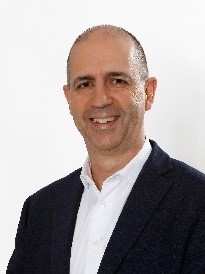Get to know Igor Cantero from CEGASA!
PhD in Chemistry from the University of the Basque Country, he is the author of 40 papers and 5 patents, in addition to more than 80 communications presented at national and international congresses.
In 2000 he started the New Technologies area of the R&D Department of CEGASA. In 2015 he assumed the responsibility of technology director of CEGASA Portable Energy, a position in which he continues in the current CEGASA ENERGIA. As CTO of the company, he has worked on the development of different storage technologies such as fuel cells or zinc and lithium-ion batteries.
What was your original motivation to become a researcher/project manager?
I remember wanting to be a scientist since I was a kid. My friends preferred to be footballers but I was more attracted to science (I was already a bit of a geek back then 😊). I chose chemistry because a scientist has to wear a white coat, right? Then I did my PhD and I was lucky enough to join a company that wanted to know what would come after the product they made (alkaline batteries). So I started the New Technologies area, which later became the main R&D department of the company.
What is your (main) research area today?
We work mainly on lithium-ion batteries. In the R&D department, we are developing projects about connecting our batteries to the cloud or modelling them for the digital twin. Also, on new algorithms and designs for the BMS. We are also looking at new technologies for thermal management and addressing improvements from an environmental point of view. All of this having in mind the new batteries we will bring to market in the coming years.
What is the main focus of your team in iSTORMY?
In iSTORMY we are involved in many tasks but our main responsibility is to develop two new batteries, one focused on high energy response and the other on high power response. In the framework of the project, we also work on the components of these two product types and on the improved software (algorithms) together with other partners like TNO and CEA. As a manufacturer, we are also helping with the exploitation of results and cost modelling.
Could you describe your favourite moment/satisfaction when working for the project and – more in general – for your organisation?
It is still to come: it will be when we install the two types of batteries at the demonstration site and everything works as expected. It will be the culmination of the effort of these years.
From what we have experienced so far, I will remember the first face-to-face meeting after the pandemic: it was a very exciting moment after meetings only through the computer and an indicator that a very hard test has finally been passed
How do you expect iSTORMY results will affect your organisation and the energy storage sector?
In the world of energy storage there is not, and will not, be a one-size-fits-all solution. The developments of the iSTORMY project will be a further step on this complex path. For CEGASA, the possibility of offering hybrid solutions in cases of peak power profiles is very important as we need to differentiate ourselves from Asian competitors in order to achieve our business niche.
Which partner would you like to nominate next for this coffee break?
The next link to the batteries in the storage system value chain after batteries is the inverter, so ZIGOR is the natural continuation.

